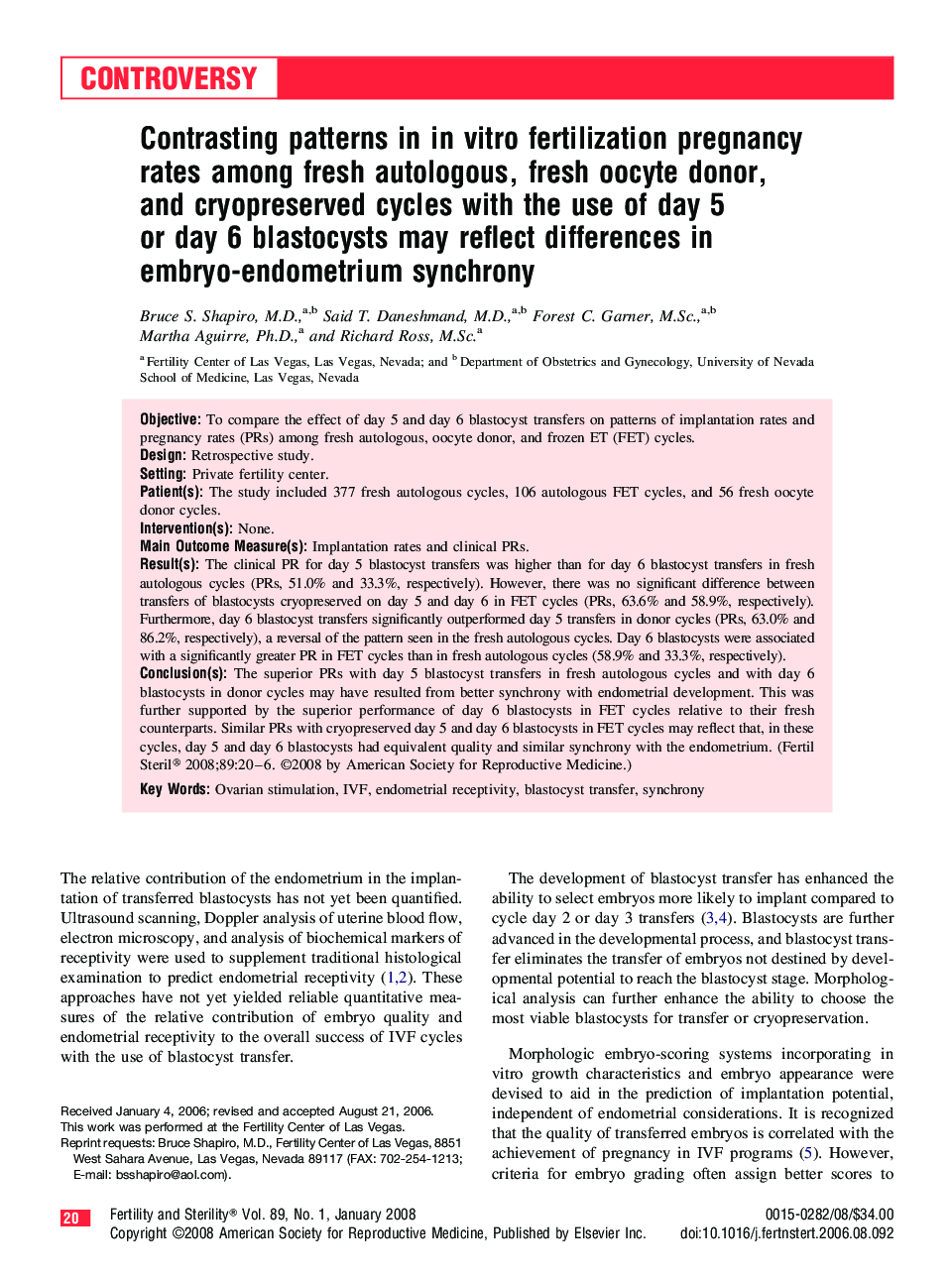| Article ID | Journal | Published Year | Pages | File Type |
|---|---|---|---|---|
| 3941882 | Fertility and Sterility | 2008 | 7 Pages |
ObjectiveTo compare the effect of day 5 and day 6 blastocyst transfers on patterns of implantation rates and pregnancy rates (PRs) among fresh autologous, oocyte donor, and frozen ET (FET) cycles.DesignRetrospective study.SettingPrivate fertility center.Patient(s)The study included 377 fresh autologous cycles, 106 autologous FET cycles, and 56 fresh oocyte donor cycles.Intervention(s)None.Main Outcome Measure(s)Implantation rates and clinical PRs.Result(s)The clinical PR for day 5 blastocyst transfers was higher than for day 6 blastocyst transfers in fresh autologous cycles (PRs, 51.0% and 33.3%, respectively). However, there was no significant difference between transfers of blastocysts cryopreserved on day 5 and day 6 in FET cycles (PRs, 63.6% and 58.9%, respectively). Furthermore, day 6 blastocyst transfers significantly outperformed day 5 transfers in donor cycles (PRs, 63.0% and 86.2%, respectively), a reversal of the pattern seen in the fresh autologous cycles. Day 6 blastocysts were associated with a significantly greater PR in FET cycles than in fresh autologous cycles (58.9% and 33.3%, respectively).Conclusion(s)The superior PRs with day 5 blastocyst transfers in fresh autologous cycles and with day 6 blastocysts in donor cycles may have resulted from better synchrony with endometrial development. This was further supported by the superior performance of day 6 blastocysts in FET cycles relative to their fresh counterparts. Similar PRs with cryopreserved day 5 and day 6 blastocysts in FET cycles may reflect that, in these cycles, day 5 and day 6 blastocysts had equivalent quality and similar synchrony with the endometrium.
